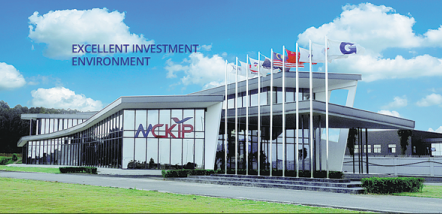
Pioneering zone signals friendship

Malaysia-China Kuantan Industrial Park is located in Kuantan, Pahang State, in Malaysia. CHINA DAILY
Malaysia-China Kuantan Industrial Park in Kuantan, the capital of Pahang State in the East Coast Special Economic Zone of Malaysia, is the first national-level industrial park established by China in Malaysia to boost cross-border cooperation and drive both industrial growth and the regional economy.
Opened on Feb 5, 2013, the park has officially become the sister park of China-Malaysia Qinzhou Industrial Park, creating an innovative model of economic cooperation between the two countries under the "two countries and two parks" model.
With a goal of "building a demonstration zone for cross-border cooperation in production capacity and driving the industrial cluster of the two countries", the park creates characteristic industries based on local resources and industrial development.
It focuses on modern sectors such as steel and nonferrous metals, machinery and equipment manufacturing, clean and renewable energy, processing trade and logistics, the electrical and electronic information industries and research and development.
Adjacent to Kuantan Port, 40 kilometers away from Kuantan Airport, and 25 km away from the urban area, the park has a planned area of 12 square kilometers,
The construction of supporting roads and sewage treatment stations in the park is 75 percent completed and is expected to be finished by the end of 2022.
The park has signed a total of 12 projects, with an agreed investment of more than 40 billion yuan ($6.3 billion) and a cumulative investment of about 12 billion yuan.
It has created 15,000 temporary jobs and 5,000 long-term jobs, driving an additional goods throughput of 18 million metric tons at Kuantan Port.
Alliance Steel, with an annual output of 3.5 million tons, is not only the first project to settle in the Malaysia-China Kuantan Industrial Park, but also a demonstration project for the Belt and Road international production capacity cooperation, with a total investment of about $1.4 billion.
The project was officially put into full operation in June 2019 and reached the design capacity. The H-beams produced fill the gap of H-beam production lines in the entire ASEAN region, and it is the largest and most advanced full-process steel enterprise in Malaysia. The cumulative total output value of the project exceeds $1.5 billion, and the monthly steel production and sales volume exceeds 300,000 tons.
Another key project is the first phase of Chongqing Bosai Mining, which has an annual output of 3 million tons of coke, 2 million tons of alumina, 500,000 tons of ferroalloys, and 120,000 tons of electrolytic manganese.
The investment amount is about $1.8 million, covering an area of about 3600 mu, or 240 hectares.
The Malaysia-China Kuantan International Logistics Park project will see co-operation by Beibu Gulf Port Group, IJM Group and China Harbour Engineering, covering an area of about 4,000 mu, or 266 hectares. It will focus on the development of warehousing, logistics and distribution, processing and transit trade.
After Beibu Gulf Port Group took a stake in Kuantan Port, the new port area has invested in the construction of two 150,000-tonnage deep-water terminals, and the goods throughput capacity of Kuantan Port has increased from 26 million tons to 52 million tons.
The breakwater, with a total length of 4.6 km and an investment of 1.66 billion yuan by the Malaysian government, has also been put into use. The debut of a direct flight route from Kuantan Port to Qinzhou Port has opened up the maritime logistics and transportation channel of "two countries and two parks".
Ma Zhengguo, a member of the Party committee and deputy general manager of Beibu Gulf Port Group, said the Malaysia-China Kuantan Industrial Park is developing under the "port-industry-park "cooperation model. It has launched major industrial projects in steel, tire, paper, energy, chemicals and logistics and achieved fruitful results in attracting investment.




